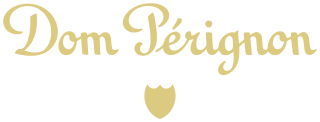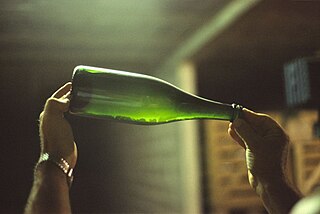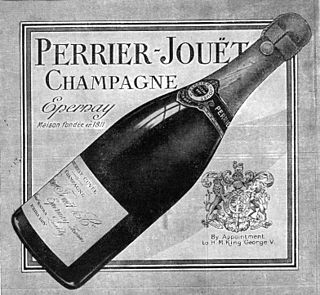
Wine is an alcoholic drink made from fermented fruit. Yeast consumes the sugar in the fruits and converts it to ethanol and carbon dioxide, releasing heat in the process. Though wine can be made from a variety of fruit crops such as plum, cherry, pomegranate, blueberry, currant and elderberry, it is most often made from grapes, and the term "wine" generally refers to grape wine when used without a qualifier.

Champagne is a sparkling wine originated and produced in the Champagne wine region of France under the rules of the appellation, which demand specific vineyard practices, sourcing of grapes exclusively from designated places within it, specific grape-pressing methods and secondary fermentation of the wine in the bottle to cause carbonation.

The wine region within the historical province of Champagne in the northeast of France is best known for the production of champagne, the sparkling white wine that bears the region's name. EU law and the laws of most countries reserve the term "champagne" exclusively for wines that come from this region located about 160 kilometres (100 miles) east of Paris. The viticultural boundaries of Champagne are legally defined and split into five wine-producing districts within the historical province: Aube, Côte des Blancs, Côte de Sézanne, Montagne de Reims, and Vallée de la Marne. The city of Reims and the town of Épernay are the commercial centers of the area. Reims is famous for its cathedral, the venue of the coronation of the French kings and a UNESCO World Heritage Site.

Sparkling wine is a wine with significant levels of carbon dioxide in it, making it fizzy. While it is common to refer to this as champagne, European Union countries legally reserve that word for products exclusively produced in the Champagne region of France. Sparkling wine is usually either white or rosé, but there are examples of red sparkling wines such as the Italian Brachetto, Bonarda and Lambrusco, and the Australian sparkling Shiraz. The sweetness of sparkling wine can range from very dry brut styles to sweeter doux varieties.

A wine bottle is a bottle, generally a glass bottle, that is used for holding wine. Some wines are fermented in the bottle while others are bottled only after fermentation. Recently the bottle has become a standard unit of volume to describe sales in the wine industry, measuring 750 millilitres. Wine bottles are produced, however, in a variety of volumes and shapes.

Château Lafite Rothschild is a French wine estate of Bordeaux wine, located in Pauillac in France, owned by members of the Rothschild family since the 19th century, and rated as a First Growth under the 1855 Bordeaux Classification.

Dom Pérignon is a brand of vintage Champagne. It is named after Dom Pérignon, a Benedictine monk who was an important quality pioneer for Champagne wine but who, contrary to popular myths, did not discover the Champagne method for making sparkling wines.

Louis Roederer is a producer of champagne based in Reims, France. Founded in 1776, the business was inherited and renamed by Louis Roederer in 1833. It remains as one of the few independent and family-run maisons de champagne. Over 3.5 million bottles of Louis Roederer champagne are shipped each year to more than 100 countries.
Wine accessories are things that may be used in the storage or serving of wine. Wine accessories include many items such as wine glasses, corkscrews, and wine racks.

Rémy Martin is a French firm that primarily produces and sells cognac. Founded in 1724 and based in the commune of Cognac, it is among the oldest cognac producers still in existence. and one of the "big four" cognac houses, responsible for producing most of the world's cognac. The brand specialises in creating Cognac Fine Champagne.
Heidsieck & Co "Monopole" is a champagne house located in the Champagne region of France.

Veuve Clicquot Ponsardin is a Champagne house founded in 1772 and based in Reims. It is one of the largest Champagne houses. Madame Clicquot is credited with major breakthroughs, creating the first known vintage champagne in 1810, and inventing the riddling table process to clarify champagne in 1816. In 1818, she invented the first known blended rosé champagne by blending still red and white wines, a process still used by the majority of champagne producers.
Gosset, founded in 1584, is the oldest wine house in Champagne. In 1584, Pierre Gosset, alderman of Aÿ and wine-grower, made still, mostly red, wines from the grapes he harvested from his own vines. In those days, two wines vied for pride of place at the table to the Kings of France: the wine of Aÿ and, from some hundreds of leagues further South, the wine of Beaune. Then, in the 18th century the wine made in around Aÿ began to bubble and the Gosset family turned naturally to the production of champagne.
Krug Champagne is a Champagne house founded by Joseph Krug in 1843. It is based principally in Reims, the main city in France's Champagne region and is one of the famous Champagne houses that formed part of the Grandes marques. Today the house is majority owned by the multinational conglomerate LVMH Moët Hennessy – Louis Vuitton S.E. whose portfolio includes other well known wine brands such as Moët & Chandon, Veuve Clicquot, Château d'Yquem and Ruinart. Despite LVMH's majority ownership, the Krug family is still actively involved in all the key decisions of the house but does not manage the day-to-day operations.
The glossary of wine terms lists the definitions of many general terms used within the wine industry. For terms specific to viticulture, winemaking, grape varieties, and wine tasting, see the topic specific list in the "See also" section below.

The traditional method is the process used in the Champagne region of France to produce Champagne. It is also the method used in various French regions to produce sparkling wines, in Spain to produce cava, in Portugal to produce Espumante and in Italy to produce Franciacorta. The method is known as the méthode champenoise, but the Champagne producers have successfully lobbied the European Union to restrict the use of that term within the EU only to wines produced in Champagne. Thus, wines from elsewhere cannot use the term "méthode champenoise" on products sold in the EU, and instead the term "traditional method" or the local language equivalent. South African wines from the Western Cape are labelled with the term Methode Cap Classique. Some wine producers in countries outside the EU may disregard EU labeling laws and use méthode champenoise or even "Champagne" on labels for products not exported to the EU, but this usage is decreasing.

Armand de Brignac, known colloquially as Ace of Spades, is a French Champagne owned by Shawn "Jay-Z" Carter and LVMH. The brand is produced by Champagne Cattier and sold in opaque metallic bottles. The brand's first bottling, Armand de Brignac Brut Gold, is identifiable by its gold bottle with French pewter Ace of Spades labels.

Perrier-Jouët is a Champagne producer based in the Épernay region of Champagne. The house was founded in 1811 by Pierre-Nicolas Perrier and Rose Adélaide Jouët, and produces both vintage and non-vintage cuvee, approximately 3,000,000 bottles annually, with its prestige label named Belle Epoque.

The history of Champagne began when the Romans planted vineyards in this region of northeast France in the 5th century, or possibly earlier. Over centuries, Champagne evolved from being a pale, pinkish still wine to a sparkling wine. When Hugh Capet was crowned King of France in 987 at the cathedral of Reims, he started a tradition that brought successive monarchs to the region—with the local wine being on prominent display at the coronation banquets. The early wine of the Champagne region was a pale, pinkish wine made from Pinot noir.
Schramsberg Vineyards is a winery located in Calistoga, California in the Napa Valley region. The vineyard, which was founded in 1862 by the German immigrant Jacob Schram, produces a series of sparkling wines using the same method as champagne. Schramsberg is considered one of the premium brands in the production of sparkling wine in California and the first U.S. wine to "match the style and quality of the best French Champagnes".













